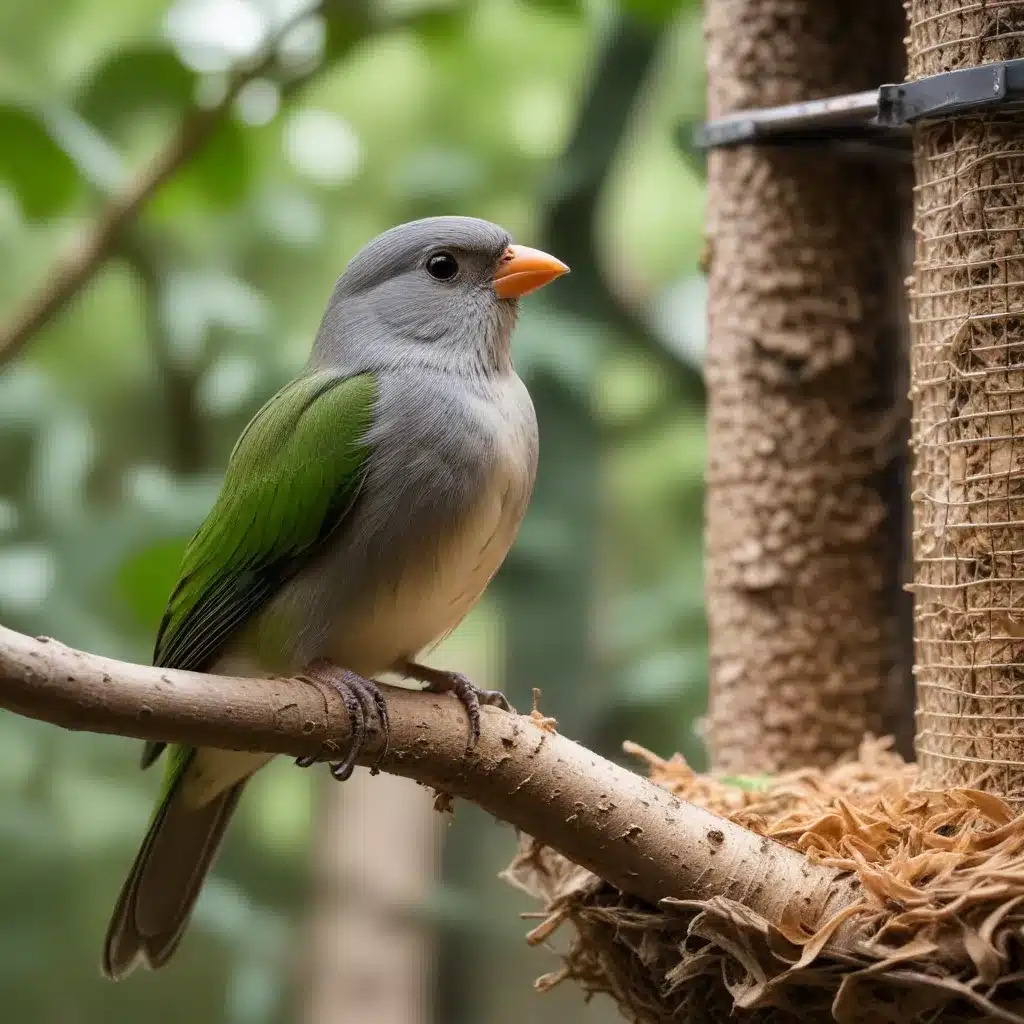
As an experienced avian caretaker, I understand the importance of creating a safe, enriching, and comfortable environment for our feathered friends. Whether you’re a seasoned bird owner or just starting your avian journey, designing the perfect habitat is crucial to the health and well-being of your feathered companions. In this comprehensive guide, we’ll explore the key considerations, practical tips, and expert advice to help you design the ideal bird habitat.
Bird Enclosure Considerations
The size and layout of your bird’s enclosure are fundamental to their overall well-being. Providing ample space for your feathered friend to move, explore, and express their natural behaviors is essential. As a general rule, the enclosure should be as large as possible, allowing your bird to spread their wings and move freely without restriction.
When it comes to the dimensions, the specific requirements will vary depending on the species and the number of birds you plan to house. For small parakeets or cockatiels, a minimum of a 24-inch wide, 24-inch deep, and 36-inch tall enclosure is recommended. Larger birds, such as macaws or cockatoos, will require significantly more space, with a minimum of a 6-foot wide, 3-foot deep, and 7-foot tall enclosure.
In addition to the overall size, the enclosure should also provide a variety of perching and nesting structures. Incorporating different sizes, textures, and shapes of perches will allow your birds to exercise their natural climbing and hopping behaviors. Nest boxes or platforms can also be included to encourage natural nesting and breeding behaviors, if desired.
Proper lighting and temperature control are crucial for maintaining the overall health and well-being of your birds. Aim to provide a combination of natural and artificial lighting that mimics the birds’ natural day-night cycle. Full-spectrum lighting, which replicates the sun’s rays, is ideal for promoting healthy feather growth, bone development, and overall vitality.
The temperature within the enclosure should be tailored to the specific needs of your bird species. Generally, most birds thrive in a temperature range of 65-80°F (18-27°C), with a slightly cooler nighttime temperature. Proper ventilation and air circulation are also essential to maintain a healthy environment.
Vegetation and Forage
Incorporating natural elements into your bird’s habitat not only enhances the aesthetic appeal but also provides important foraging and enrichment opportunities. When selecting plants and vegetation, it’s crucial to choose species that are safe and non-toxic for your feathered friends.
Native plants, such as flowering bushes, grasses, and vines, can create a visually stunning and biologically diverse environment. These plants can also serve as a source of natural forage, allowing your birds to exhibit their natural foraging behaviors. Be sure to research the specific dietary needs and preferences of your bird species to ensure the selected plants are suitable.
Providing a reliable and varied water source is essential for maintaining proper hydration and encouraging natural bathing behaviors. Consider incorporating a shallow, easy-to-access water dish or a small, shallow pool. Ensure the water is kept clean and free of any contaminants.
When it comes to food, offer a diverse array of high-quality, nutritious options. In addition to a well-balanced commercial bird food, supplement their diet with a variety of fresh fruits, vegetables, and even cooked whole grains. This not only promotes a healthy and balanced diet but also provides mental stimulation and foraging opportunities.
Avian Enrichment
Creating an enriching environment for your birds is crucial to their overall well-being. Incorporating various elements that encourage natural behaviors, such as climbing, foraging, and exploration, can significantly improve their quality of life.
Providing hiding spots, such as hollow logs, thick foliage, or custom-made nooks and crannies, allows your birds to feel secure and exhibit their natural instincts to seek shelter. Encourage exploration and problem-solving by adding toys, swings, and other interactive elements that challenge their curiosity and dexterity.
Encouraging social interaction is also an important aspect of avian enrichment. If housing multiple birds, ensure the enclosure size is adequate to accommodate their social needs without causing stress or conflict. Introducing new toys, rotating perches, and rearranging the habitat can also stimulate their curiosity and prevent boredom.
Biosecurity Measures
Maintaining a clean and well-ventilated environment is essential for the health and safety of your birds. Proper sanitation protocols, including regular cleaning of the enclosure, food and water dishes, and perches, can help prevent the spread of diseases and parasites.
Ensuring adequate airflow and ventilation is crucial to maintaining good air quality. Avoid placing the enclosure in areas with stagnant air or near potential sources of fumes, such as cooking areas or heavily trafficked zones. Consider installing fans or air purifiers to promote air circulation and filtration.
Implementing effective pest and disease control measures is also essential. Regularly inspect the habitat for any signs of pests, such as mites or insects, and take appropriate action to eliminate them. Consult with an avian veterinarian to develop a comprehensive health management plan, including routine check-ups, preventive treatments, and quarantine protocols for new additions to your flock.
By considering these key factors and following best practices, you can create a safe, enriching, and comfortable habitat that will allow your feathered friends to thrive. Remember, every bird is unique, and it’s essential to tailor your habitat design to the specific needs and preferences of your avian companions. With a little planning and attention to detail, you can ensure your birds enjoy a happy and healthy life in their ideal environment.
For more information on avian care, be sure to check out the resources available on Mika Birds Farm. Their team of experts is dedicated to providing comprehensive guidance and support to bird owners of all levels.


